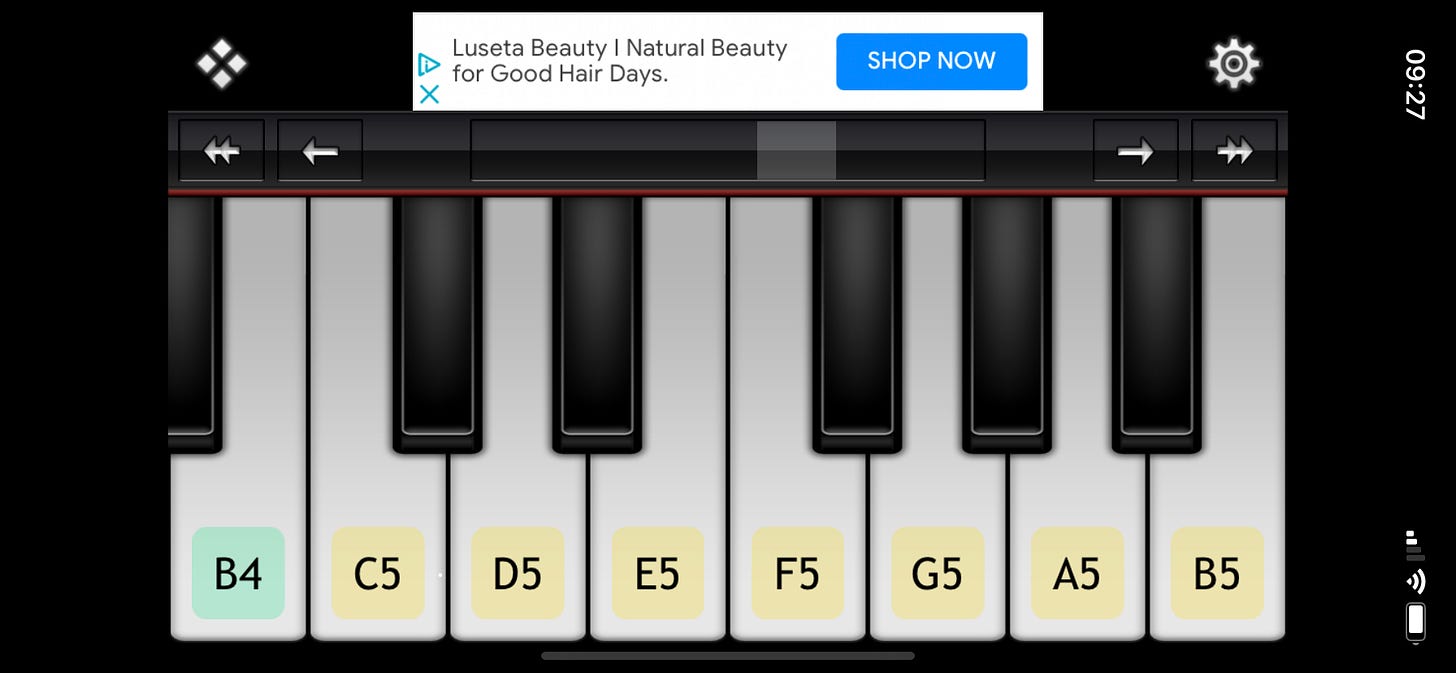Last week’s Bonus Round: "Smuggler's Blues" is a song written by Glenn Frey and Jack Tempchin, and performed by Frey. It was the third and final single from Frey's second studio album, The Allnighter (1984). It followed "Sexy Girl" and "The Allnighter"; of the three, it charted highest. Its music video won Frey an MTV Video Music Award in 1985.
The 16th episode of Miami Vice is named after the song, which was incorporated into the episode.[1] Frey played an airplane pilot in the episode.[2] Credit Wikipedia
For this week I’d like to expand on a theme we’ve talked about recently, how to create melodies from the harmonic chords used to arrange the musical accompaniment to lyrics, or conversely to create and arrange (and re-arrange) the melodies that work with the phrasing and meter and rhythm structures of lyrics written to harmonic music already created. As I’ve talked about, this is not a strength of mine and I’m learning as we go along here, too. Lyric writing comes relatively easy to me, much easier than finding something more than 4 or 5 chords for verses, altering or adding to them for the chorus and finding interesting chordal variations (7ths and extensions/alterations) in the same key to make the bridge stand out. I tend to write in more traditional structures: Verse-Chorus (or Verse Verse Chorus), Bridge, Verse-Chorus. But not always and I think it’s good to try different approaches. We’ve seen songs in past Bonus Rounds that pretty much ignore conventional structures (example: Dusty Springfield’s cover of “Windmills Of Your Mind”). That’s interesting songwriting, IMHO.
A handy little free app, to add to the other 5 indispensible apps for musicians, that I’ve discovered (for iPhone/iOS - I assume without knowing there is an Android version or something similar) is called Virtuoso, and it looks like this on my phone:
Yes, there are ads (nothing is truly “free”) but it gives you a view of an octave of keys to press and hear, identifying them by natural note and the octave number (as on an 88 key piano/keyboard). Handy for picking out an arpeggio of a chord and maybe adding some notes that are extensions of the arpeggio that you can use to hear what you may be able to forge into a melody between chord changes. For instance - the CMaj triad is C-E-G. If your song is in the key of CMaj, you could start with the triad notes in any order (or inversion, technically - I don’t remember if or when we talked about inversions, so feel free to ignore the word if it’s not familiar). You could experiment with other notes in or out of the scale/key/chord and add in others. For examples, 7ths or other notes or extensions, such as a 4th (F5) or a flat 5/sharp 4 (Gb/F# - ebony key between F5 and G5) . The 7th in CMaj in the next lowest octave is B4 in the picture above or in the octave is B5, just out of the picture to the right. You can use the arrow buttons to move to higher or lower octaves. For reference, “Middle C” is C4 - the C note that occurs in the 4th octave from the left end of the keyboard on an 88 key piano.
Since I’m learning much of the mechanics of melody from harmony along with you (at this point it’s going to be very helpful to have a pretty good grounding in music theory), I’m going to be inserting some links today as places to go for help from people who probably actually know what they’re doing.
First, from a website I just discovered (and yes, you’re going to get a lot of emails if you download their “free” stuff", they’re marketing their courses, which may or may not be for you), a good primer on the subject:
Chord Progressions To Melodies
Next a video from our friends at Acoustic Guitar Magazine:
I’ve kind of avoided pentatonic scales as subject matter because I believe (still do) it’s a subject best reserved for discussion with your guitar instructor, and this may give you some background so you can have that discussion with a little background first. Your guitar instructor’s guidance is far more valuable than any articles or videos.
Guide tones, voice leading and stepwise melody writing are sort of the same thing, but also sorta not. Last week I included a link on guide tones, here’s voice leading.
So, whether you write lyrics first or harmony/melody music first to put lyrics to later, there is a LOT to know and think about. Should you? I don’t know, when I started writing songs, I just did it, only realizing later how much I didn’t know. Some of what I learned later caused me to go back and rewrite or change lyrics, sections (I learned I’m not good at pre-chorus writing, and rewrote most of my songs that had pre-choruses by just creating verses out of them - your mileage may vary) and whatnot. Am I a better songwriter? I think so, but I kind of like the simple (if naive) stuff I started with, and you can always go back to improve it (beware, you might not actually be improving it - sweet and simple songs definitely have their place).
We’ll revisit this subject and more as we continue our journey on here. If you have a go-to method, article or video or even a podcast that you learned from, leave a link in the comments for us to learn from as well - thanks!
Here are some interesting SubStackers who write some great stuff about music, music theory, and songwriting, and a lot of the other stuff we talk about on Michael Acoustic - check them out here:
Bonus Round: This has to come before autumn….
Cheers and keep playing!!
Michael Acoustic






Thank you for the shoutout. What I like about what you’re doing and they way you do it is the open experience sharing aspect. Giving access to tips and tricks - no matter how basic or complex - that you’ve gathered along the way is invaluable. Thanks again.
Glad to hear you like my stuff! I subscribed to your newsletter because I am a guitar beginner. Hope to see your musical journey in you pub. Please have yourself a good one! Thanks!